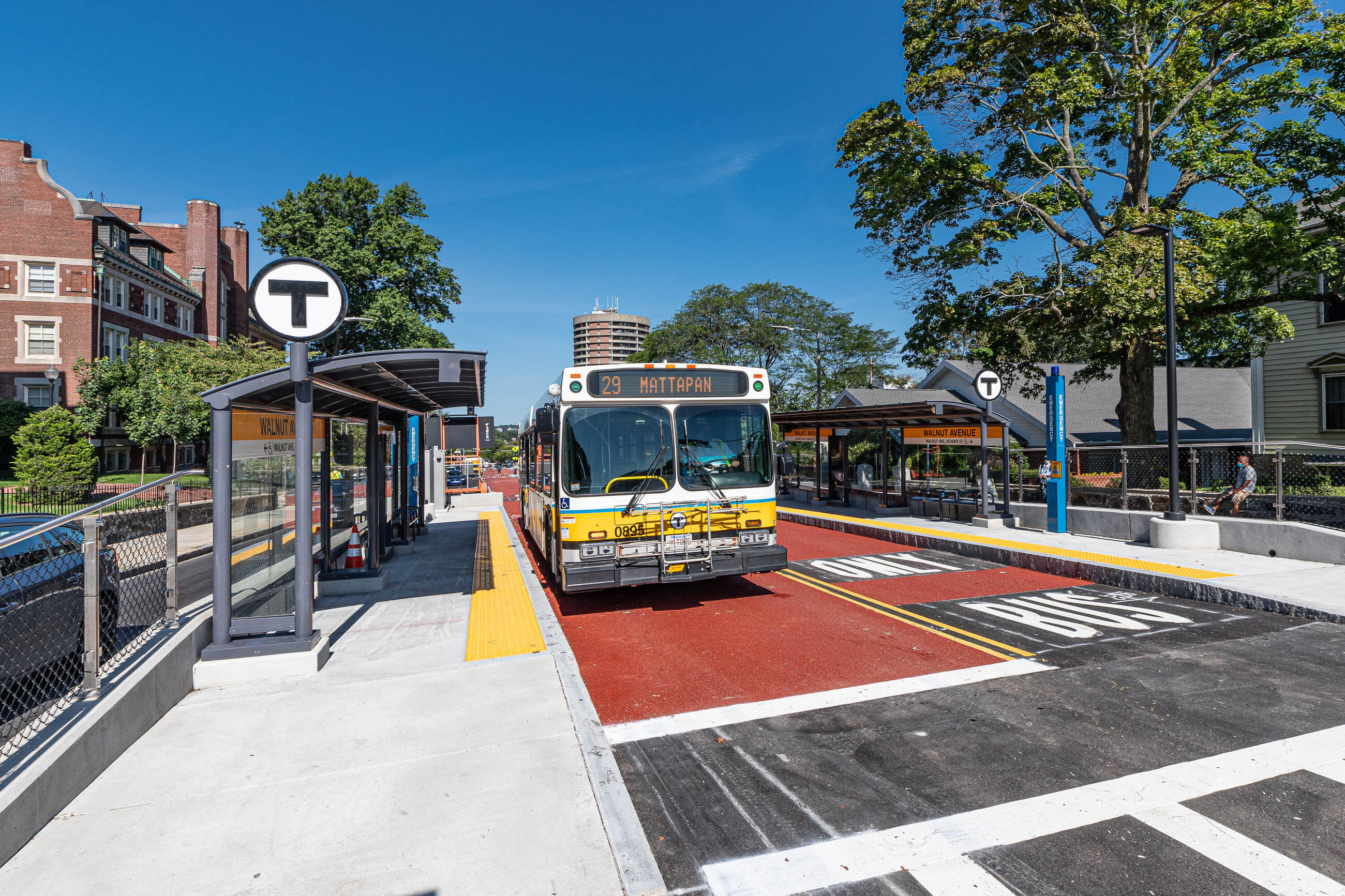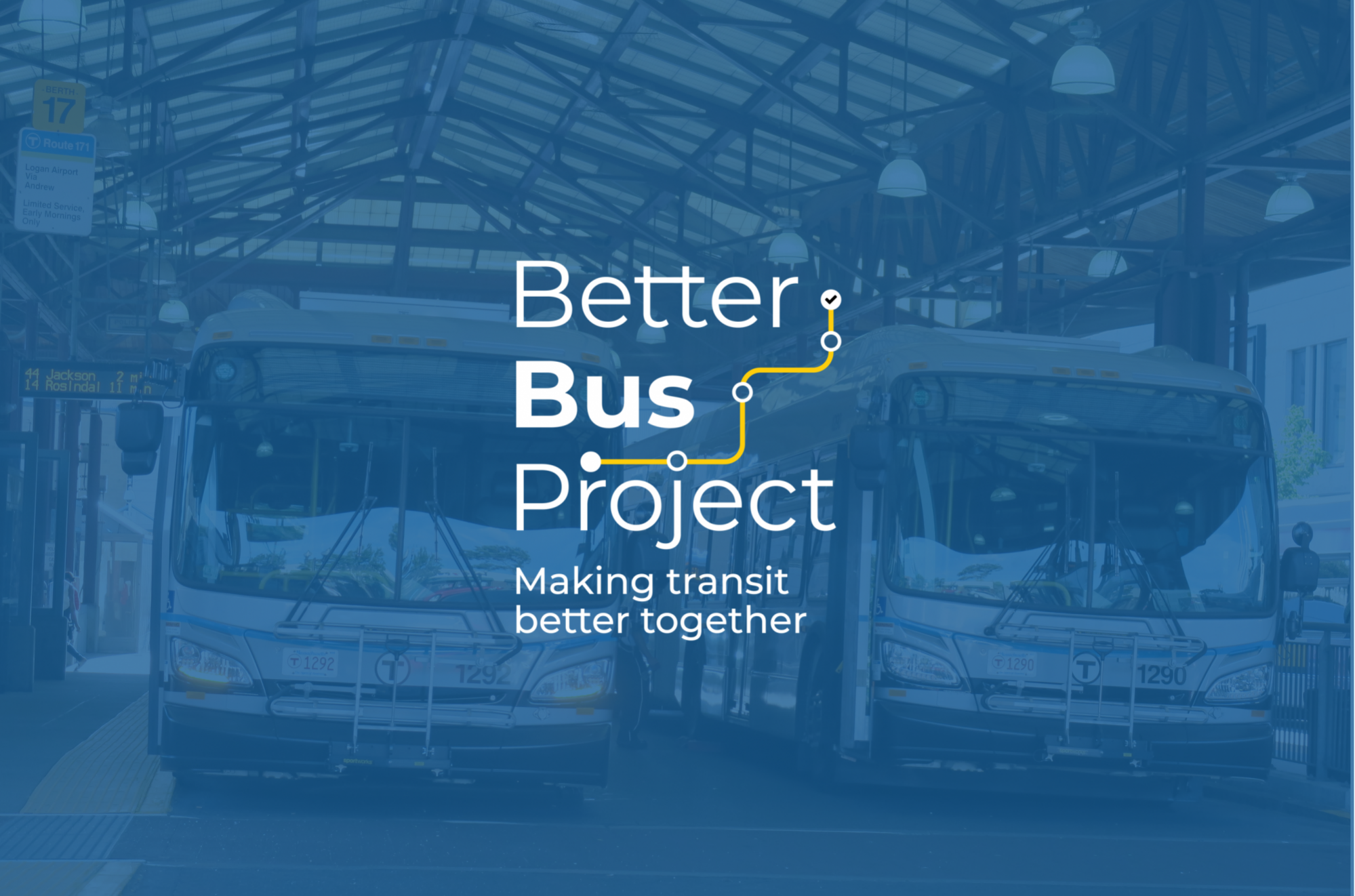Columbus Avenue Bus Lanes Now Open
Updated on November 3, 2021
The Columbus Avenue Bus Lanes Project is complete, and operational service began on October 30, 2021.
Bus routes 22, 29, and 44, which are some of our busiest, serve a large number of low-income and minority riders. The new priority bus lanes will provide these riders with faster, more reliable trips, saving them four to seven minutes along the corridor.
Learn more about the Columbus Avenue Bus Lanes project
What We Accomplished

In partnership with the City of Boston, we installed center-running bus lanes and new boarding platforms between Walnut Ave and Jackson Square.
We also improved pedestrian safety and accessibility with new crosswalks, ramps, signals, and curb extensions along the corridor.
The new Columbus Avenue boarding platforms feature:
- Canopy shelters
- Higher curbs for easier boarding
- Digital screens with real-time arrival information
- Safety barriers to separate riders on the platforms from traffic
- New seating and improved lighting
- Emergency call boxes
Construction broke ground in August 2020 and was accelerated over the last year.
What We’re Doing Next
The Boston Region Metropolitan Planning Organization (MPO) recently green lighted funding to support extending the center-running bus lane to Ruggles station.
The MBTA Transit Priority Group was created in 2019 with support from the Barr Foundation. In conjunction with the Better Bus Project, we’re partnering with communities to help make bus transit faster and more efficient.
Building a Better T
As part of our $9.6 billion, 5-year capital investment plan, we're renovating stations, modernizing fare collection systems, upgrading services for our buses, subways, and ferries, and improving the accessibility of the entire system.
Related Projects
Bus Transit Priority
We’re partnering with communities to develop more bus lanes to give riders faster, more reliable trips, and implement other transit priority features like queue jumps and signal priority.
Better Bus Project
The experience of taking an MBTA bus fails to live up to our own standards in too many ways. Through the Better Bus Project, we are changing that.
Building a Better T
As part of our $9.6 billion, 5-year capital investment plan, we're renovating stations, modernizing fare collection systems, upgrading services for our buses, subways, and ferries, and improving the accessibility of the entire system.
Related Projects
Bus Transit Priority
We’re partnering with communities to develop more bus lanes to give riders faster, more reliable trips, and implement other transit priority features like queue jumps and signal priority.
Better Bus Project
The experience of taking an MBTA bus fails to live up to our own standards in too many ways. Through the Better Bus Project, we are changing that.

